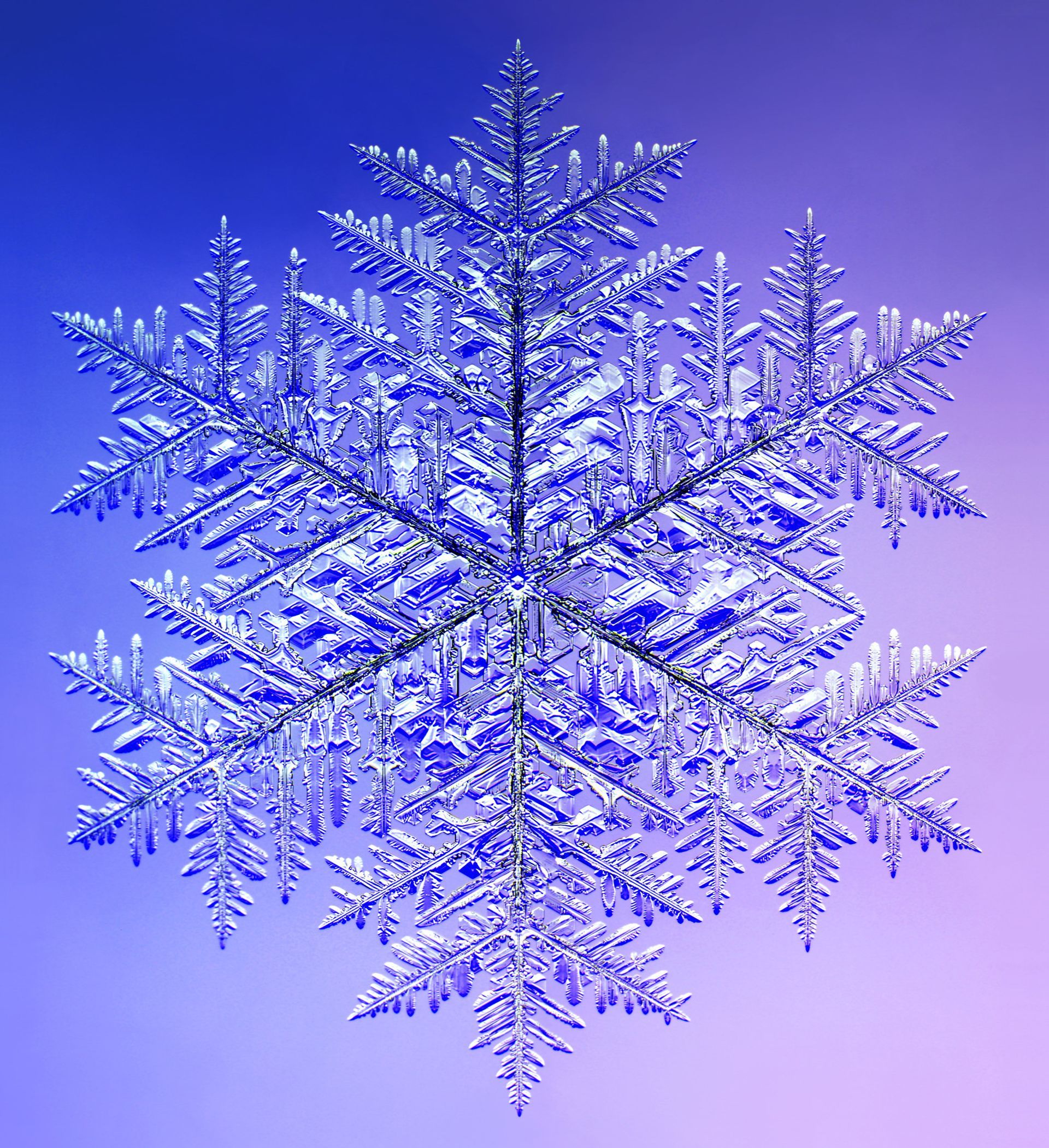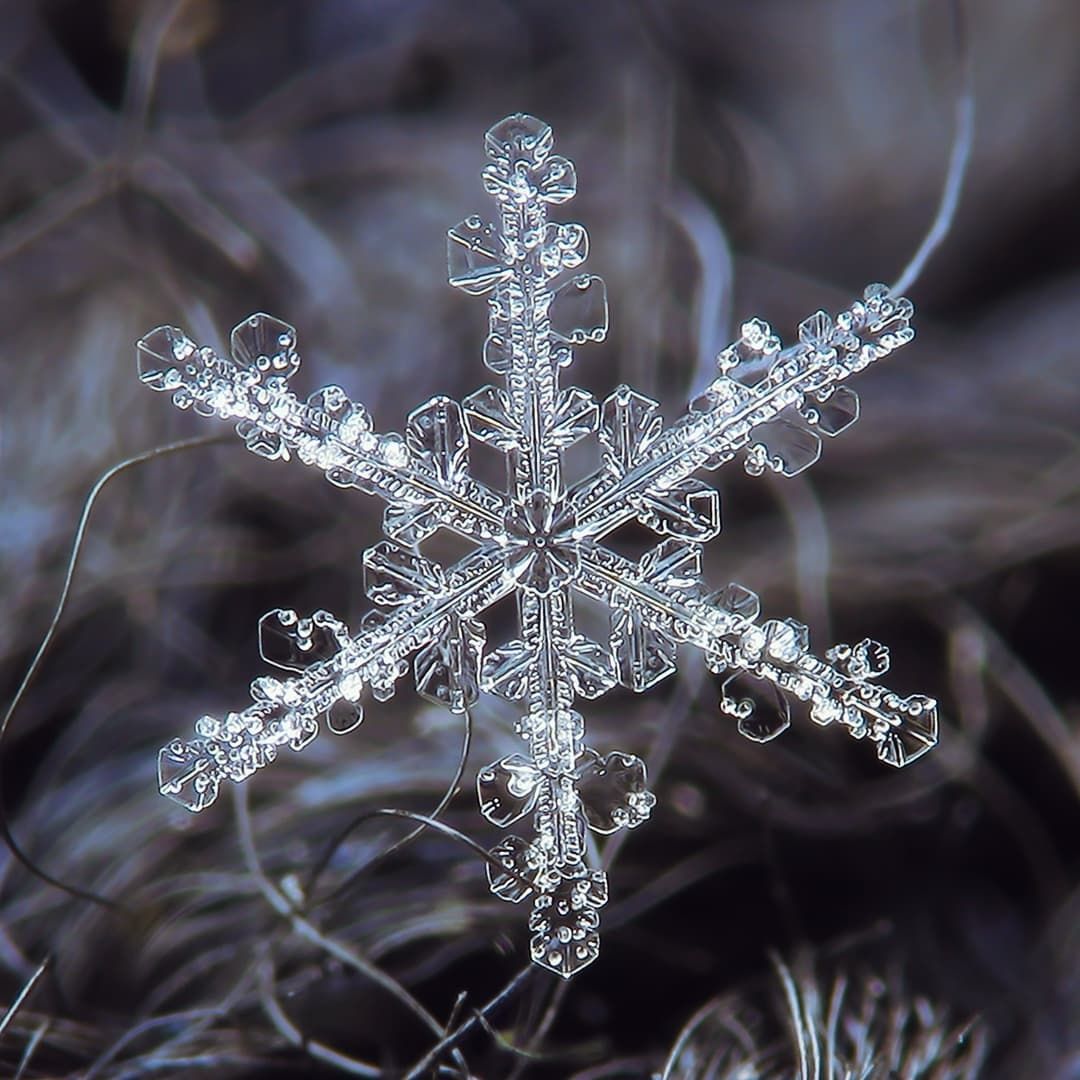World Largest Snowflake, world record at Fort Keogh, Montana

Fort Keogh, Montana, United States--A giant snowflake discovered by Matt Coleman, a ranch owner in Fort Keogh, Montana, in 1887, measured 15 inches (38.1 cm) wide and 8 inches (20.3 cm), setting the world record for being the World Largest Snowflake, according to the WORLD RECORD ACADEMY.

"Individual snowflakes are quite small, as you may have noticed, but sometimes they stick together and create a much larger snowflake. It is common to have big snowflakes sized around 3-5 centimeters , but in January 28th 1887 there was nothing common in the size of snowflakes flying in the air in army base of Fort Keogh, Montana, US," the
Apukka Resort says.
"During the day the snowflakes had been exceptionally big, but this one was a true giant. The soldiers guarding Fort Keogh witnessed very bizarre sight when the most massive snowflake ever fell from the sky. The flake was sized 38 centimetres and was 20 centimetres thick, meaning the snowflake falling from the sky was size of a dinner plate. In Finland kids like to play and try to catch the flakes with their tongues, with a snowflake this size it would be quite a dangerous game.
"According to scientific theories, these giant snowflakes can in fact be formed easily. They are formed when a heavy, wet snow is falling with little wind. Under those conditions, flakes that have a slight surface sheen of water easily stick together and form larger flakes. So this giant flake of Fort Keogh was formed of many small snowflakes. Since biggest known snow crystal measured was only little over 1 centimeters from tip to tip, there must have been hundreds of them in this one massive flake. This snowflake was so exceptional that here in Europe no-flake can compete with it. Biggest known and measured snowflake was found in Berlin January 10th 1915 and was only around 10 centimeters wide."
"While there is no photographic evidence of the snowflake that Matt Coleman saw, it probably wasn’t a gigantic version of the dainty symmetrical shape we see adorning shop windows or hanging from Christmas trees," the
Medium.com says.
"According to Sandra Yuter at NC State’s Department of Marine, Earth and Atmosphere Sciences, the shapes of most snowflakes are a lot more chaotic than the decorations we make with scissors and folded paper.
"Because snowflakes are formed at varying levels of moisture and temperature and then fall at different speeds, a variety of ice crystal shapes will often lump together with frozen water droplets."
"“Did you know,” the calendar read, “that the largest reported snowflake measured 15 inches (38.1 cm) wide and 8 inches (20.3 cm) thick?! It was discovered by a ranch owner in Fort Keogh, Montana, in 1887,” the NC State News says.
"When we think of snowflakes, most of us envision the symmetrical, lacelike patterns that adorn greeting cards at this time of year. But the vast majority of snowflakes are not so neat and tidy, Yuter says. Most snowflakes are downright lumpy, made up of many individual ice crystals as well as frozen water droplets that resemble fuzzy snowballs.
"As these ice crystals fall and swirl through the clouds that formed them, they form larger flakes by continuing to grow, clumping together, gathering freezing water droplets, or all of the above. Water droplets that freeze on contact with an ice crystal create tiny snowball particles. And when multiple snow crystals clump together into a jumble, the snow particles they form are known in meteorological circles as aggregates."
"More by accident than design, scientific field studies in recent years have begun to document the existence of very large flakes with laser probes that can make precise measurements. Two expeditions in the Canadian wilds have done so from airplanes flying through heavy winter storms,"
The New York Times says.
"In the future, NASA and its international partners are to join the hunt for giant snowflakes with satellites that measure global precipitation, including snowfall. The work is seen as crucial for climate studies. The first satellite is to fly in 2013, at an overall mission cost of roughly $1 billion.
"Hundreds or perhaps thousands of crystals will come together to form a giant snowflake, scientists say. But it turns out that even a single crystal can be surprisingly large. Snow crystals, despite their legendary diversity, come in a relatively small number of general shapes, including prisms, columns, stars, cups, plates, bullets and needles."
"The largest snowflake ever recorded was an incredible 15 inches wide and 8 inches thick! Can you imagine sticking your tongue out to catch that monster snowflake? According to the Guinness Book of World Records, this snowflake fell in January 1887 during a storm at Fort Keogh, Montana. Matt Coleman, a rancher near the site, was the one to report the sighting, describing the snowflake as “larger than a milk pan”. However, there is no photographic evidence to back up this claim," the A-Z Animals says.
"Although a snowflake of such a colossal size may be hard to believe, researchers now think that incredible reports like Matt’s are true! It appears that unusually large snowflakes — between 2 to 6 inches wide and possibly even bigger — regularly fall around the globe. They may be surprisingly fluffy and quite large, although not many people get the chance to see them.
"For a snowflake to become as big as the record-setter from 1887 — bigger than a football! — the environment would have to be very calm so the flake could have a chance to retain its large shape. Plus, there would need to be a lot of moisture in the air for enough ice crystals and frozen water droplets to collect. It’s worth noting that the record-breaking snowflake was most likely not the perfectly symmetrical “snowflake” shape we usually think of. Instead, it was likely an aggregate snowflake with an irregular, lumpy shape."
"A snowflake that large stretches the bounds of credibility. Guinness World Records lists a snowflake 15 inches in diameter and 8 inches thick as measured at Fort Keogh, Montana, in 1887, as the largest," the
Chicago Tribune says.
"Large snowflakes consist of "packets" of many smaller snow crystals loosely clinging together. As they fall through the air, individual snow crystals brush past each other, matting together to form larger snowflakes whose fall speeds increase, thereby accelerating the gathering process.
"Routine measurements of snowflake sizes are not made but meteorologists believe two-inch snowflakes are credible."
"We really can’t picture the world’s biggest snowflake. Apparently, it was 15 inches long. But there is no photo since it was spotted by multiple people all the way back in 1887. Nothing has overtaken it in the Guinness Book of World Records because…well, how do you preserve a snowflake long enough to prove it?" the
WTF Fun Facts says.
"According to the Guinness Book of World Records page for the “largest snowflake”: “It is reported that on 28 Jan 1887 at Fort Keogh, Montana, USA, ranch owner Matt Coleman measured a snowflake that was 15in 38cm wide and 8in 20cm thick, which he later described as being ‘larger than milk pans’ in Monthly Weather Review Magazine.”
"Experts insist that snowflakes as large as frisbees or basketballs aren’t entirely out of the question – but they’re likely multiple snowflakes attached to one another. Yet, since the 19th century, there have been multiple recorded sightings of such giant flakes falling from the sky (and really falling since their weight and size would make them fall faster than small snowflakes)."
Photos: World Largest Snowflake, world record at Fort Keogh, Montana
(1) Snow Crystals
(2) Great BIG Nature
|
Alabama world records |
Alaska world records |
Arizona world records |
Arkansas world records |
California world records |
|
Colorado world records |
Connecticut world records |
Delaware world records |
Florida world records|
|Georgia world records | Hawaii world records| Idaho world records| Illinois world records| Indiana world records|
|Iowa world records | Kansas world records| Kentucky world records| Louisiana world records| Maine world records|
| Maryland world records| Massachusetts world records | Michigan world records | Minnesota world records |
| Mississippi world records | Missouri world records | Montana world records | Nebraska world records |
| Nevada world records | New Hampshire world records | New Jersey world records | New Mexico world records |
| New York world records | North Carolina world records | North Dakota world records | Ohio world records |
| Oklahoma world records | Oregon world records | Pennsylvania world records | Rhode Island world records |
| South Carolina world records | South Dakota world records | Tennessee world records | Texas world records |
| Utah world records | Vermont world records | Virginia world records | Washington world records |
| West Virginia world records | Wisconsin world records | Wyoming world records|
| Agriculture world records| Amazing careers world records | Arts world records |
| AMUSEMENT & THEME PARK WORLD RECORDS |
| Biggest world records | Business world records | Books world records | |
| Christmas world records | Collections world records | CATS world records | DOGS world records |
|Drinks world records | | Easter world records | Entertainment world records | FASHION world records |
|
Farming world records |
Fishing world records |
Food world records |
|
Games world records |
Green world records |
Halloween world records |
Hobbies world records|KIDS world records |
| Human Body world records | Internet world records | INVICTUS world records | JUSTICE world records |
| Mass Participation world record | Medical world records |
| Military world records | MEDICAL world records | MUSEUM world records | Modern Society world records |
|
Most Successful world records | Nature world records | New Year world records |
PET world records |
|
Religious world records | Science world records |
Skydiving world records
| Smallest world records | Sport world records | Stunts world records | Strength world records |
| Technology world records | Thanksgiving world records | Travel world records | Transport world records |
| Valentine's Day world records | Youngest world records |
| Weather world records | Wedding world records | WORLD'S FIRST world records |


